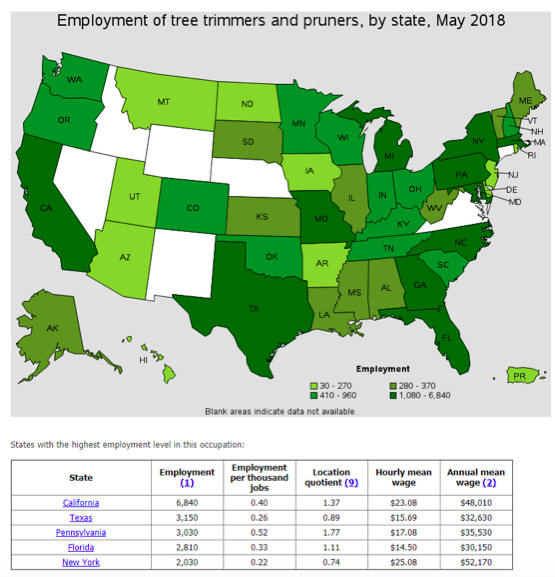Utility Arborist Labor Shortage Highest in Areas Most in Need

By Brian Joiner
The need for more qualified utility arborists is a conversation our industry has been having for a long time. With increased nationwide occurrences of hurricanes, floods, wildfires and other disasters, the demand is greater than ever. The U.S. National Oceanic and Atmospheric Administration, which tracks U.S. weather and climate events that have great economic and societal impacts, estimates these disasters added up to about $91 billion dollars in damages in 2018 alone. Our need to keep right-of ways clear and to protect utility facilities from falling vegetation, in the midst of these emergencies, has added to the demand for available skilled labor.
The utility forestry profession is a small part of arborist industry nationwide and requires special training to work around power lines and to respond to emergencies. The industry’s recruiting efforts have not yet been enough to meet the need for more workers. In many cases, the utility industry is competing for the same applicants as the environmental, biological and emerging safety sector, and the construction industry. With this opportunity comes more businesses looking to cash in on the industry, and poaching has become an issue within some markets. While we have been trying to keep up with the demand, the need only increases with each new fire in the west or hurricane in the south and east. This is why, when the Utility Arborists Association (UAA) created a recruiting taskforce nearly 90 people volunteered to pitch in to help tackle this problem. It is felt industrywide, no matter what part of the business you’re in.

U.S. Department of Labor, Bureau of Labor Statistics
Coastal areas employ the largest percentage of our arborists. The U.S. Department of labor designates coastal areas among the highest number of regions employing tree-care-related workers. These states have also seen the biggest demand for tree work because of weather and fire-related emergencies. Trends show that young middle-class workers are moving away from large coastal cities to more affordable inland cities in Texas, Arizona, Nevada and Tennessee. This can only contribute to the shortage of labor in these hard-hit areas in need.
Millennials are moving inland. People often think growing environmental concerns along the coasts are the reason this age group is moving, but even though it factors into the trend, the main reason is the cost of living. Millennials are moving to cities in the south and west with strong job markets, taxes as much as three-times less, lower cost of living and housing costs, and that have trendy, youth-oriented amenities.
According the U.S. Census, millennials are the generation most on the move. It is often a difficult decision for them because they may be leaving families who came to these areas of sun and opportunity just a few decades ago. However, once they move, they might not be coming back, because, by age 35 they are settled in a new community, have bought a home, and have children established in schools.
This migration of millennials — who are not pursuing tech jobs — is a real concern because our industry relies on young, strong workers who may not yet be earning the higher wages that will provide them a comfortable standard of living in areas with high housing costs.
Many things need to happen to keep and build a skilled workforce in the areas that need it most — along our coasts. Many are not within our direct control. But our industry can make a continued effort to recruit workers, provide training, keep safety as a top priority, and create a work culture where our employees can grow in their careers. It is meaningful and important work to help keep our communities safe and in power.
Brian Joiner is president of ACRT Pacific.


